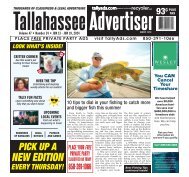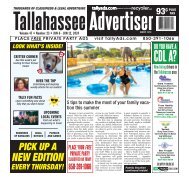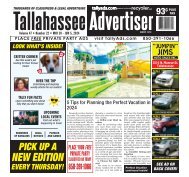TLA32_AllPages_R
You also want an ePaper? Increase the reach of your titles
YUMPU automatically turns print PDFs into web optimized ePapers that Google loves.
J. J. KELLER’S ELD INSIGHTS<br />
Appropriate Off-Duty Uses for<br />
Personal Conveyance<br />
for development of IRT:<br />
• In September, run a small-scale IRT model test<br />
• In April 2019, run a full-scale IRT model test<br />
• In June 2019, evaluate test results and effectiveness of the full-scale model.<br />
The rationale for IRT is that FMCSA needs “a more formal, statistical model to<br />
replace the current SMS algorithm and that the agency should focus on improving its<br />
data, including exposure and crash data,” the NAS report to Congress said.<br />
The FMCSA proposals that were withdrawn include changes to the intervention<br />
thresholds used by the agency to decide which carriers are a crash risk; segmenting<br />
the hazardous materials BASIC and making it public; making the violation for<br />
operating out-of-service show up under the unsafe driving BASIC rather than under the<br />
specific violation BASIC; increasing the maximum vehicle miles traveled in its carrier<br />
calculations; making the intervention threshold in the vehicle maintenance BASIC the<br />
75th rather than the 80th percentile; raising the controlled substances BASIC to the 90th<br />
percentile; and keeping the 65th percentile the intervention threshold for unsafe driving,<br />
crash indicator and HOS compliance.<br />
TIME FOR AN UPGRADE<br />
Federal Motor Carrier Safety Administration Chief Ray Martinez wasn’t kidding<br />
when he told Truckload Authority that it’s imperative FMCSA gets its computer systems<br />
upgraded and generating good data.<br />
FMCSA June 18 issued an interim final rule delaying certain aspects of its Medical<br />
Certification integration in order to give FMCSA and state licensing entities more time<br />
to get their IT systems coordinated and up to speed.<br />
The delay changed the deadline from June 22 this year to June 22, 2021.<br />
The FMCSA administrator said prior to his confirmation hearings that the agency’s<br />
The recently published FMCSA guidance on personal conveyance provides<br />
additional flexibility for fleets that choose to allow their drivers to utilize<br />
off-duty driving for personal conveyance. The flexibility comes from the<br />
removal of the “unladen” term, which eliminates the strict requirement for a<br />
driver’s vehicle to be “empty,” as well as the appropriate use scenarios in<br />
Interpretation Question #26 from §395.8.<br />
Each personal conveyance scenario will be reviewed by enforcement based<br />
on at least these four primary points:<br />
1. Is the driver ill or fatigued?<br />
2. Is the driver off duty?<br />
3. Is the move purely personal, with no benefit to the business?<br />
4. Is the move to strictly seek the closest, safe place to park, even if a driver<br />
has moved along the route line to the next business-related location?<br />
Examples of appropriate uses of a CMV for personal conveyance while off<br />
duty include, but are not limited to:<br />
• Time spent traveling from a driver’s en route lodging (such as a motel or<br />
truck stop) to restaurants and entertainment facilities.<br />
• Commuting between the driver’s terminal and his or her residence,<br />
between trailer-drop lots and the driver’s residence, and between work<br />
sites and his or her residence. In these scenarios, the commuting distance<br />
combined with the release from work and start to work times must<br />
allow the driver enough time to obtain the required restorative rest as to<br />
ensure the driver is not fatigued.<br />
• Time spent traveling to a nearby, reasonable, safe location to obtain<br />
required rest after loading or unloading. The time driving under personal<br />
conveyance must allow the driver adequate time to obtain the required<br />
rest in accordance with minimum off-duty periods under 49 CFR 395.3(a)<br />
(1) (property-carrying vehicles) or 395.5(a) (passenger-carrying vehicles)<br />
before returning to on-duty driving, and the resting location must be the<br />
first such location reasonably available.<br />
• Moving a CMV at the request of a safety official during the driver’s<br />
off-duty time.<br />
• Time spent transporting personal property while off duty.<br />
• Authorized use of a CMV to travel home after<br />
working at an offsite location.<br />
For a copy of our Personal Conveyance fact sheet,<br />
visit JJKeller.com/PC<br />
www.Truckload.org | TRUCKLOAD AUTHORITY 13

















